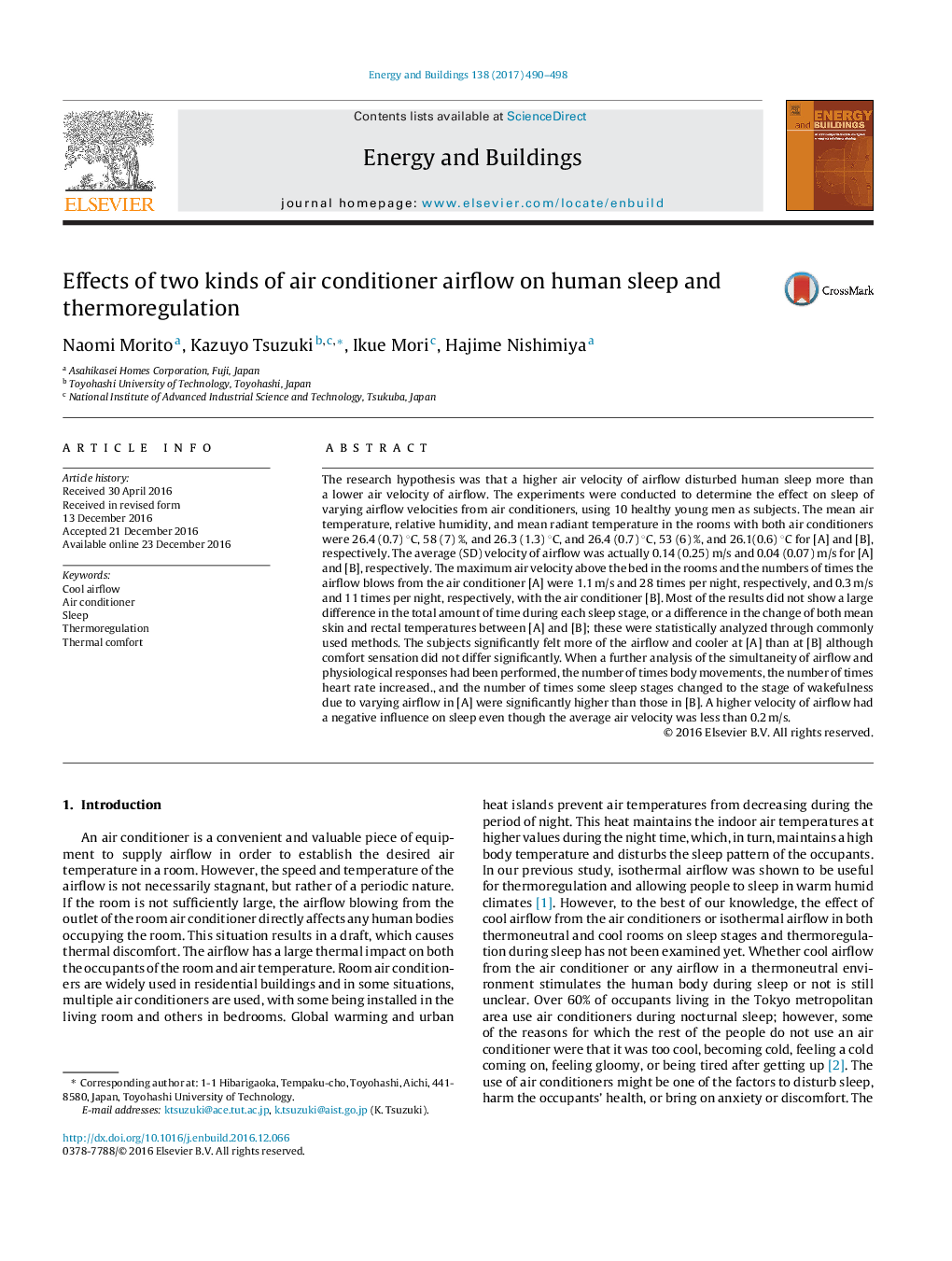| کد مقاله | کد نشریه | سال انتشار | مقاله انگلیسی | نسخه تمام متن |
|---|---|---|---|---|
| 4919457 | 1428952 | 2017 | 9 صفحه PDF | دانلود رایگان |
عنوان انگلیسی مقاله ISI
Effects of two kinds of air conditioner airflow on human sleep and thermoregulation
ترجمه فارسی عنوان
اثرات دو نوع جریان هوای تهویه هوا بر خواب انسان و تنظیم گرما
دانلود مقاله + سفارش ترجمه
دانلود مقاله ISI انگلیسی
رایگان برای ایرانیان
کلمات کلیدی
جریان هوای سرد، تهویه کننده هوا، خواب تنظیم حرارتی، راحتی حرارتی،
موضوعات مرتبط
مهندسی و علوم پایه
مهندسی انرژی
انرژی های تجدید پذیر، توسعه پایدار و محیط زیست
چکیده انگلیسی
The research hypothesis was that a higher air velocity of airflow disturbed human sleep more than a lower air velocity of airflow. The experiments were conducted to determine the effect on sleep of varying airflow velocities from air conditioners, using 10 healthy young men as subjects. The mean air temperature, relative humidity, and mean radiant temperature in the rooms with both air conditioners were 26.4 (0.7) °C, 58 (7) %, and 26.3 (1.3) °C, and 26.4 (0.7) °C, 53 (6) %, and 26.1(0.6) °C for [A] and [B], respectively. The average (SD) velocity of airflow was actually 0.14 (0.25) m/s and 0.04 (0.07) m/s for [A] and [B], respectively. The maximum air velocity above the bed in the rooms and the numbers of times the airflow blows from the air conditioner [A] were 1.1 m/s and 28 times per night, respectively, and 0.3 m/s and 11 times per night, respectively, with the air conditioner [B]. Most of the results did not show a large difference in the total amount of time during each sleep stage, or a difference in the change of both mean skin and rectal temperatures between [A] and [B]; these were statistically analyzed through commonly used methods. The subjects significantly felt more of the airflow and cooler at [A] than at [B] although comfort sensation did not differ significantly. When a further analysis of the simultaneity of airflow and physiological responses had been performed, the number of times body movements, the number of times heart rate increased., and the number of times some sleep stages changed to the stage of wakefulness due to varying airflow in [A] were significantly higher than those in [B]. A higher velocity of airflow had a negative influence on sleep even though the average air velocity was less than 0.2 m/s.
ناشر
Database: Elsevier - ScienceDirect (ساینس دایرکت)
Journal: Energy and Buildings - Volume 138, 1 March 2017, Pages 490-498
Journal: Energy and Buildings - Volume 138, 1 March 2017, Pages 490-498
نویسندگان
Naomi Morito, Kazuyo Tsuzuki, Ikue Mori, Hajime Nishimiya,
